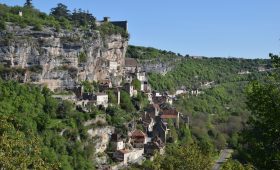Le Mans: Discovering a City Beyond the Race
History and Culture
Le Mans, once the capital of the province of Maine, is a city with a rich history that extends beyond its famous 24-hour race. The city’s roots trace back to Roman times, and its historical significance is evident in the beautifully preserved old city, known as the “Cité Plantagenêt.” This area has served as a backdrop for several films, showcasing its cinematic charm.
At the heart of Le Mans lies the Saint-Julien Cathedral, a magnificent example of Gothic architecture. Construction began in the 11th century and spanned over 500 years, resulting in one of the largest cathedrals in France. Its reversed rounded arches are a testament to the evolving architectural styles of the Middle Ages.
The 24 Hours of Le Mans
The annual 24 Hours of Le Mans race, held since 1923, is a major event that draws motorsport enthusiasts from around the globe. The race is unique, as it takes place partly on a race circuit and partly on closed-off public roads. Notably, in 1999, driver Pete Dumbreck survived a dramatic accident during the race, highlighting the event’s thrilling yet risky nature.
Exploring the Old Town
The Old Town of Le Mans is a maze of narrow streets and picturesque squares. Begin your exploration at Place de la République, a lively square with cafes and shops. From there, venture into the Plantagenet City, where you can walk along the ramparts and enjoy panoramic views of the city.
Don’t miss the Maison d’Adam, a charming half-timbered house from the 15th century. For a deeper dive into the city’s history, visit the Musée de la Reine Bérengère, which houses a collection of art and artifacts spanning from Roman times to contemporary works.
Culinary Delights
Le Mans is located in the Pays de la Loire region, known for its culinary offerings. Try the local specialty, rillettes, a savory meat spread perfect for a picnic. For something sweet, visit Les Halles du Mans, a bustling market where you can indulge in freshly baked croissants or a slice of tarte aux pommes.
Best Time to Visit
Consider visiting Le Mans during the summer months, from June to August, when the weather is warm and ideal for exploring on foot. However, this is also the peak tourist season, so expect larger crowds. For a quieter experience, spring or fall offers mild weather and fewer visitors.
Getting There and Around
Le Mans is easily accessible from Paris via the TGV train, with a journey time of about 55 minutes from Paris Montparnasse. There is also a direct TGV service from Charles de Gaulle Airport, taking around 90 minutes. If you prefer driving, the A11 highway connects Paris to Le Mans, making it a convenient two-hour drive.
Once in Le Mans, the Old Town is best explored on foot. For longer distances, the city offers a reliable tram and bus network. The tram lines T1 and T2 connect key areas, including the city center and the 24-hour race circuit.
Le Mans offers a blend of history, culture, and modern excitement. While the city is famous for its race, its historical and cultural offerings make it worth a visit any time of the year.



